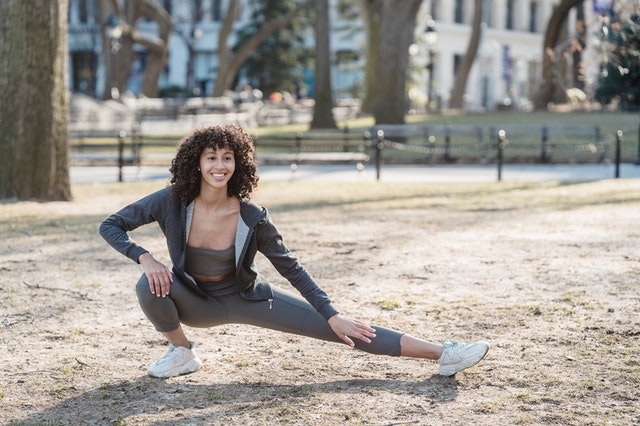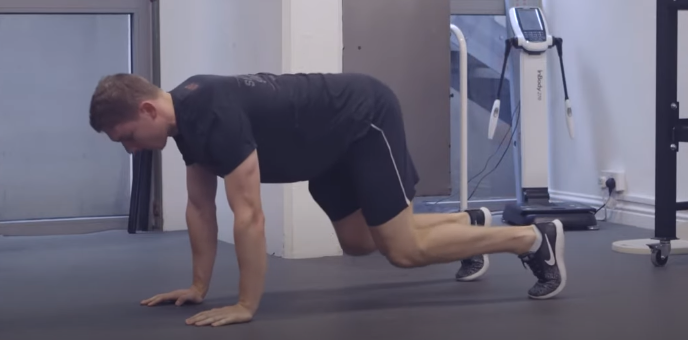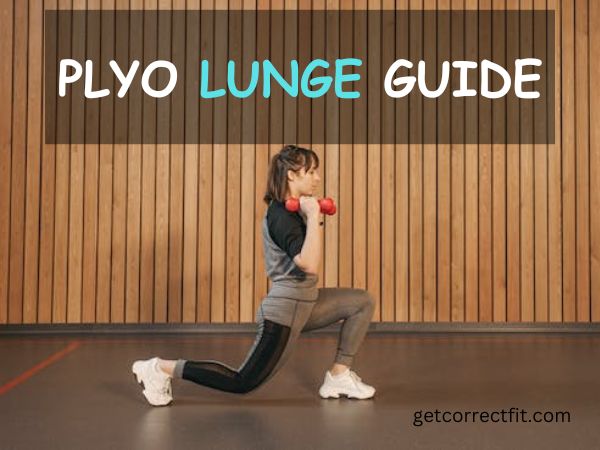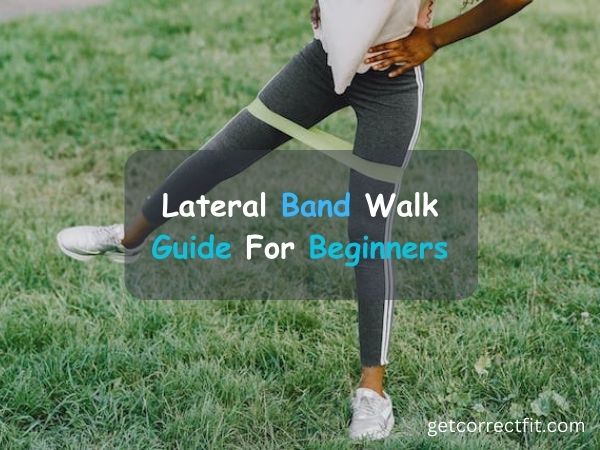The hip flexor is one of the most important areas responsible for the movement of the feet and the lower back, and it is one of the strongest and most important pillars of the body. Since many people suffer from hip flexor pain, we decided to present to you this post that includes the 5 best exercises to unlock hip flexors.
You may not be able to have a relaxing workout or even a walk on a nice sunny day if you have hip flexor problems, so it is imperative that you put an end to that now.
Most of the problems of poor joint flexibility or finding it difficult to bend the hip or perform some movements do not require getting rid of this problem with medication or visiting doctors continuously, it only needs to do some flexibility exercises and stretch the muscles well, and this is agreed upon by all specialists.
Let’s continue together to learn about the 5 best hip flexor unlock exercises, how to get rid of pain, and what are the benefits and mistakes that you should avoid to stay healthy.
What are the hip flexors ?
The hip flexor is one of the most important elements responsible for foot movements such as walking and helping to run, and the most important thing is that it is responsible for flexing the hip.
You use your hips when you want to pick up something off the floor, climb stairs, or kick a ball or something.
If you are wondering where the hip flexors are located, they are located in the upper front part of the thigh and consist of three main muscles (Psoas Minor, Psoas Major, Lliacus), and with regard to the functions of the hip flexors, they play a major role in stabilizing the pelvis and spine along with the rest of the basic muscles.
How do you unlock a locked hip ?
Everyone is prone to feeling locked in their hip flexors, and to control this problem and reduce it, you must add some hip stretching exercises to your daily routine.
Extension and flexibility exercises are among the most powerful exercises that help improve the movement of the joint, unlock it and improve its functions, so the answer to the question is exercises and there is no other solution.
Fitness levels may differ from one person to another, and the age factor also plays a role in quickly regaining the movement of the hips and activating them again, but there are also different exercises that are compatible with healthy adults and also young people, and all of these exercises share one goal, which is to open the hip flexor and activate it again.
This is what we will discover later below.

Are hip flexor stretching exercises worth it?
Stretching exercises are a treatment without medication for the joints, as well as for some muscle spasms, so that the stretching exercises allow you to tame the joints and make them more flexible.
Many studies have confirmed the effectiveness of stretching exercises in improving joint functions, strengthening them, and reducing pain and injuries, so that the only way to target joints, stretch them and improve their movement, as we mentioned above, is through exercises.
Specialists do not stop bringing people of different ages who suffer from problems in the hips, and the extension exercises solutions have always been the most appropriate for the emergence of improvements in the participants, and also for bodybuilders, this matter is very important to them because the stretches and balance exercises are like warm-up exercises and prepare the muscles for the actual exercises in the gym.
What are the best exercises to unlock hip flexors ?
The exercises in this list have been classified as safe and effective movements in targeting the muscles of the hips, stretching them well, and working to strengthen them and improve their movement.
We’ll go over the top 5 exercises and how to do them shortly below!
1 – Standing Lunge
2 – Foam Rolling Quads
3 – Knees To Chest
4 – Spider-Man Stretch
5 – Pigeon Pose
6 – Seated Butterfly
7 – Standing Hip Flexor Stretches
8 – Leg Swing
9 – Standing Hip Opener
10 – Open Lizard
Best 5 exercises to unlock hip flexors
These exercises are intended for people who suffer from hip flexion problems or want to improve the movement of the hips and strengthen them well. They can also be useful before and after high-intensity exercises that target the lower part of the body, or exercises that require some flexibility in the joints before starting to perform them.
1 – Standing Hip Flexor Stretches
Standing hip flexor stretches are exercises that you can do anywhere, whether at work, home or outside the home. This exercise helps you gain greater flexibility in the lower back and hip flexor area.
You can do this exercise immediately before lifting heavy things or when you feel that the hip flexor is locked, so an exercise like this can help solve the problem, and it is better to get used to doing it every morning.
How to do it right:
- First, stand up straight, keep your eyes looking forward, your chest pushed forward as well and engage your muscles well.
- Take a step forward, keeping your leg perpendicular to the ground and maintaining some bend in your knee.
- Keep the back foot straight back.
- Put both hands on the lower back muscles as you would like to push them forward.
- Then try to arch your back back and keep the pelvis in the middle (i.e. stretch the upper back muscles back and keep your hands on the lower back muscles as you push them in the opposite direction.
2 – Foam Rolling Quads
This is another exercise of effective treatments for the hip flexor and making it gain greater flexibility and stability, so that many athletes in different types of sports rely on this type of exercise to restore joint mobility and make it more flexible and more prepared for those difficult movements that can lead to injuries and pain. .
How to do it right:
- First, it is better to have a rolling pillow or to use anything that can help roll the thigh muscles forward and backward.
- It will look like you’re crawling as Spider-Man, with your arms on the ground.
- If you are going to roll the right thigh, and you will place your right elbow on the floor, place the rolling pad under the front of the right thigh.
- Keep your other arm almost straight and your elbow tilted towards your side muscles, and with respect to your left foot you will be in a climbing position.
- Use your elbow placed on the ground, then start rolling your body forward and backward and on both sides.
- Try to roll forward well and pass the pillow over the entire thigh area.
3 – Spider-Man Stretch
Perhaps this movement is one of the most powerful exercises that will really help you open the locked hip flexor and extend it widely and make it gain the necessary flexibility and stability.
Spider-Man stretches are exercises that are more effective in targeting the hip joints and are relied upon by many athletes and coaches, and they usually open intense exercise sessions with this type of stretching exercises. It will really help you tremendously and make you feel free to flex your hips again.
How to do it right:
- First, stand up straight and engage your muscles well.
- Get down on all fours (ie dog pose, your arms will be straight with your shoulders down, and your knees will be at a 90-degree angle).
- Then move into a push-up position, and try to be as solid as a plank.
- Then try to pull one of your feet forward well, as if you are trying to climb a high staircase, pull your foot until it rests next to the palm of your hand.
- Try to feel tension in the hip flexor and stretch your foot forward well.
- Then try to lower your hips down and try to touch the floor with your knee extended backward.
4 – Half Kneeling Stretches
This is another movement that you will want to add to your routine very much because it allows you to stretch your muscles on a wide and larger scale. It works almost like the Spider-Man extension exercise, but it excels in the area it provides to stretch the muscles of the hips and compress them well.
You can go with this type of exercise on a daily basis. There is no harm in that. On the contrary, you will notice some improvements at the level of the hip joints, and you will feel greater mobility, gain flexibility and stability, and stay away from pain and injuries.
How to do it right:
- First you will do a half kneeling and try to be more disciplined, keep a knee in front of you at an angle of 90 degrees, then keep a knee back at an angle of 90 degrees and your leg parallel to the ground.
- Work the hips well and try to maintain the stability of the pelvis with this exercise, and tighten the core well.
- You will feel a good stretch in your lower thigh if you do things right.
- Then start lowering the hips down and try to stretch your muscles well and try to detach the angle of the knee placed on the ground and move forward until your foot becomes almost straight.
- Go back until your knee becomes at a 90-degree angle and your front knee loosens its angle as well.
- Try to push your weight and squeeze your muscles well with each extension.
5 – Static Lunge (Loading Back Leg)
This is another exercise that can be added to our selection today. It is a powerful exercise and is recommended by specialists for people who suffer from locked hip flexors. It works for this purpose because it loosens the joints well and makes them gain flexibility and improve their functions wonderfully.
How to do it right:
- First, stand up straight, engage your muscles, and be more prepared to perform the movement.
- Take a step farther forward, but as far as it will allow you to remain balanced and more stable.
- Keep the upper part of the body and the pelvis in the middle (that is, do not bend your back forward or backward, keeping your back straight at all times).
- Then start lowering the hips straight down perpendicular to the ground until you feel the tension of your muscles.
Specialist tip to stay away from hip flexor pain
As soon as you ask Google about the advice of specialists in improving the hip flexor and improving its functions, you will find dozens of different answers that share one point, which is extensions exercises. Specialists advise getting used to doing extensions exercises regularly throughout the week, so that coaches recommend doing one round of 10 repetitions of each stretching exercise.
You may need these exercises when you feel sharp or sudden pain in the thigh or hip area, as well as you may need them as a medicine for cramps or swelling and bruising of the thighs.
The research gate was created in a study it conducted on the effectiveness of extension exercises in improving hip flexor functions, so that the results were more than impressive, and many people were able to improve the strength of the hips, as well as get rid of injuries and reduce their potential in the future.
Therefore, the advice that any specialist will give you is to adhere to the exercises regularly, and it is better to do them in the early morning directly after waking up. Or anywhere to do a few reps.
What are the most hip flexor pain causes?
It is good to be aware of the reasons that may lead to locking of the hip flexor and make it lose its flexibility and movement. You can also avoid these problems if you avoid making some mistakes or some daily habits that may be a reason for that.
Here is a list of some of the reasons that may be causing your hip flexors to lock:
- Doing some exercises that engage your hip flexors regularly and in the same way may be a reason to lock your hip flexors, because you stress the muscles repeatedly without making counter movements to achieve some muscular balance.
- Also, sitting for a long time is one of the most common causes of hip flexor lock, and this is common among employees who stay in offices for long hours or sit in front of a computer.
- There may also be some reasons beyond your control, such as muscle deformities or having limbs that are missing in measurements (such as having one leg longer than the other).
- One of the reasons is also that many people suffer from a weak core, and therefore the muscles of the hips do more than necessary to maintain the stability of the spine.
Benefits of having a strong hips
The benefits of having stronger hip flexors are seen only by those people who suffer from locked hip flexor problems and those who cannot bend their hips or pick up something off the ground without feeling pain in their lower back muscles.
So here are some benefits:
- Lower back muscles get more stable and flexible.
- Improving hip flexor functions and making them more mobile.
- Reducing the feeling of pain and the possibility of injury.
- Improve spine stability.
- Strengthening muscles and stimulating them to be active during exercises.
- Also help improve performance during exercises that target lower body muscles.
- You can carry some heavy weights and do some sudden movements without feeling that sharp pain in the lower back.
Useful Links
If you are a fan of doing exercises at home, here are some links that can help you stay in good shape or even build a strong physique so that you can learn about the most powerful exercises and ways to do them safely and effectively.
Train your lower back with kettlebells at home
The best barbell squat variations for strengthen your legs
The most powerful leg exercises at home (with resistance bands only)
Learn about cable crossover alternatives at home (without machine)



